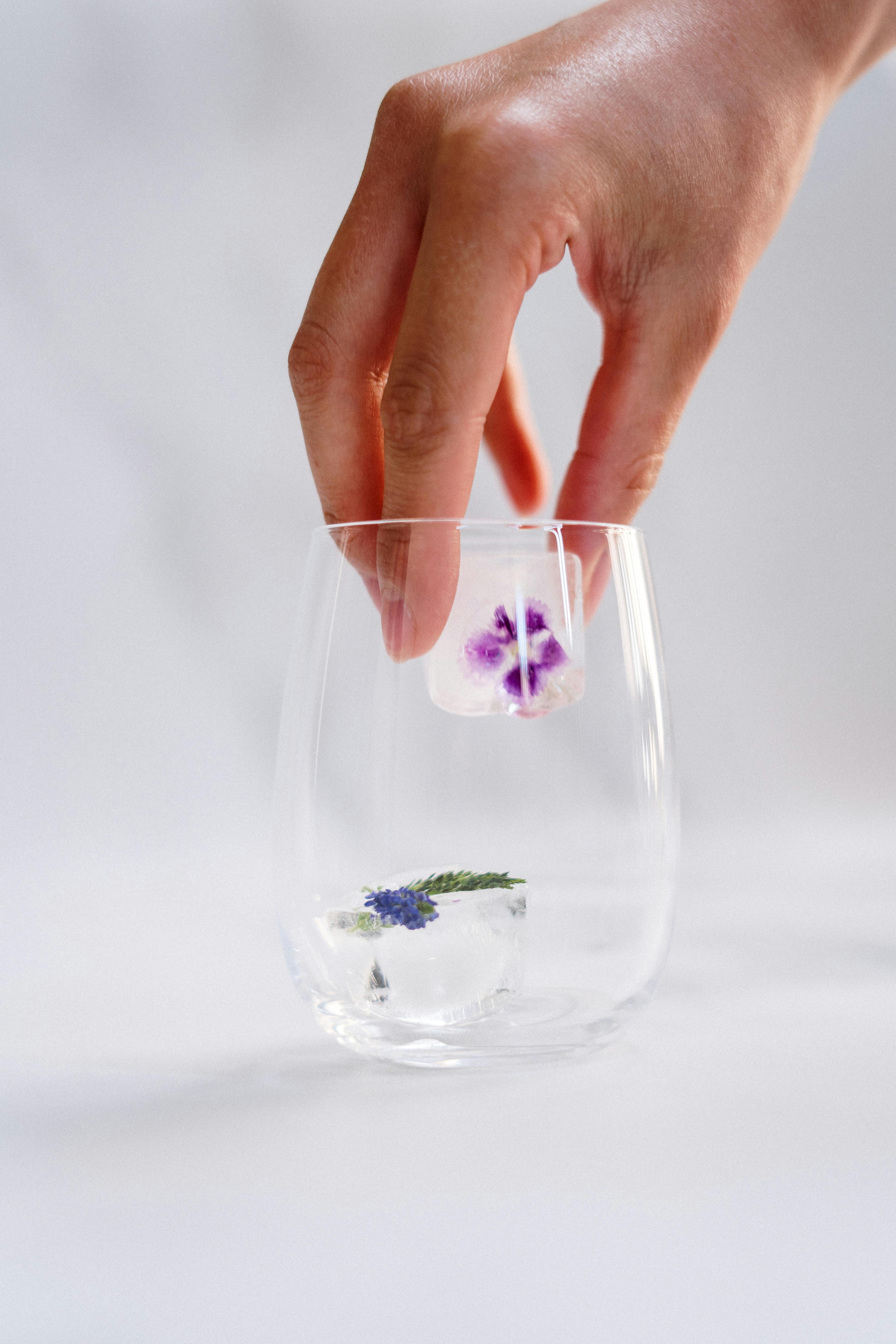Smart Ways to Quickly Soften Butter for Perfect Baking
Understanding the Importance of Softened Butter
Softening butter is crucial for achieving the right texture and consistency in your baked goods. Recipes often call for softened butter, especially when making cookies, cakes, and frostings. Properly softened butter allows for better incorporation of air during mixing, which ultimately leads to a lighter, fluffier texture in your baked goods. Additionally, using butter at the correct temperature ensures a creamy, smooth consistency in mixtures, enhancing the overall flavor and quality of your desserts. When butter is too cold, it can result in dense, heavy baked products. Conversely, if it's too warm, your batter can become too greasy, leading to undesirable outcomes. Therefore, mastering the process of softening butter quickly is essential for anyone serious about baking. This article will explore various methods to soften butter efficiently, so you can achieve that perfect consistency for your recipes.Common Softening Butter Methods
When it comes to softening butter, several methods can be utilized depending on the time you have available. The most popular techniques include using a microwave, warm water baths, and simply leaving it at room temperature. Each method has its pros and cons, but all can achieve the desired texture if done correctly. **Microwave Softening**: A popular quick method is using the microwave. Place your butter in a microwave-safe bowl and heat it in 10-second intervals. Be cautious during this process, as butter can melt quickly, and you want it softened, not melted. This method is efficient and works well when you're in a time crunch. **Warm Water Bath**: Another effective way to soften butter is through a warm water bath. Fill a bowl with warm water and place your butter (in its wrapper) into the water for about 10-15 minutes. The warmth gently softens the butter without risking any melting. **Room Temperature**: The traditional approach is to leave the butter at room temperature for 30-60 minutes. This method works well if you plan ahead, ensuring that your butter reaches the perfect softness while maintaining its flavor.Creative Techniques to Soften Butter
Beyond the basic methods, there are several creative techniques to soften butter quickly and effectively. Let’s explore these innovative hacks that can make a baker's life easier. **Cutting Butter**: One simplistic method involves cutting the butter into small cubes. Smaller pieces soften much faster compared to a whole stick. Spread these cubes on a plate, and within 10-15 minutes, they should be soft enough to use. **Grating Butter**: If you're in a real hurry, consider grating your butter. This method not only softens it instantly but also allows it to blend seamlessly into your recipe. Use a cheese grater to create small shreds that will soften quickly. **Using Warm Utensils**: Sometimes, your utensils can help in softening butter more effectively. Using a warm mixing bowl or a fork that has been heated can help soften the butter as you beat it. Just be careful not to introduce too much heat.Essential Tips for Proper Butter Temperature
Achieving the perfect softened butter involves understanding the ideal temperature. The recommended temperature for softened butter is around 65°F (18°C). At this temperature, the butter is pliable enough for creaming with sugar or incorporating into batters without being overly melty. **Check the Texture**: Softened butter should yield slightly when pressed but should still maintain its shape. If your butter looks shiny or starts to melt around the edges, it's too warm. Always be conscious of time and temperature when softening butter.How to Achieve the Ideal Butter Cream Consistency
Optimizing Butter for Frosting and Cakes
The consistency of softened butter is essential when making frostings and cakes. A beautifully creamy butter ensures a smooth and spreadable frosting. To achieve this, focus on these techniques to avoid any common pitfalls. When making frosting, ensuring your butter is at the perfect softness is key. Use the above methods to achieve quick softening, and once you’ve reached that ideal temperature, beat the butter for a minute before adding sugar. This practice ensures a fluffy consistency that prevents graininess. **Mixing Techniques**: When blending softened butter into your flour mixture, use a paddle attachment on your mixer. This method allows the butter to incorporate evenly, creating a creamy texture. If you’re manually mixing, ensure you’re mixing long enough to incorporate air but avoid over-mixing, which can spoil the texture.Quick Tips for Using Softened Butter in Recipes
Understanding how to incorporate softened butter into your recipes can make a significant difference. Here are some quick tips to enhance your baking: 1. **Temperature Alignment**: Always align the temperature of your other ingredients with that of the butter. For example, using eggs at room temperature with softened butter helps in achieving a consistent batter. 2. **Gradual Addition**: When incorporating softened butter into your batter, add it gradually while mixing. This method ensures that the butter emulsifies well rather than clumping in the mixture. 3. **Taste Test**: Always taste your batter before baking. Softened butter impacts the flavor profile, and adjusting sugar or other elements might be necessary to enhance overall taste.Innovative Butter Hacks for Baking Enthusiasts
Utilizing Microwave Methods Safely
Using a microwave to soften butter is effective but requires careful observation to avoid melting. Here are some tips for successful microwave methods: 1. **Cover It**: Use a microwave-safe cover while softening butter to allow steam circulation, which helps in achieving even softening without melting. 2. **Rotate Your Butter**: In case you’re using a microwave that doesn’t rotate, manually turn the butter after every 10 seconds to allow even softening from all angles. 3. **Check Often**: Be vigilant and check your butter every few seconds after the first 20 seconds to ensure you're not cooking it beyond the desired softness.Proper Butter Management and Storage
Knowing how to store your butter properly can help maintain its texture, aiding in effective softening later on. Keep these butter management tips in mind: **Refrigeration**: Always store your butter in the refrigerator to keep it fresh. However, if you plan to use it shortly, consider taking out what you need and letting it soften at room temperature. **Freezer Storage**: If you have leftover butter, you can freeze it as well. When you need it, you can grate or cube it directly from the freezer for quick softening. **Use Airtight Containers**: Maintain the freshness of your butter by keeping it in airtight containers. This practice not only extends its shelf life but also helps in preventing it from absorbing other odors from the fridge.The Role of Butter Temperature in Baking Success
How Butter Temperature Influences Your Baked Goods
Butter temperature can greatly affect the outcomes of your baking efforts. Here’s how: **Dough Texture Control**: Cold butter results in a flaky dough for pastries, while softened butter leads to a more tender crumb in cakes. Understanding these nuances allows you to adapt based on what you’re baking. **Air Incorporation**: Butter should be soft enough to trap air while creaming, as this process provides volume to your bakes. Therefore, achieving the ideal butter consistency is critical for recipes requiring leavening.Using Butter Effectively in Different Recipes
Different recipes have varying requirements for butter. Here’s how to effectively utilize the right softened butter in several classic recipes. **Cookies**: For cookies, using softened butter will help incorporate sugar for that perfect chewy texture. Be careful with the mixing time to avoid overworking the dough. **Cakes**: When making cakes, softened butter mixed with sugar should be beaten until light and fluffy. This process includes proper aeration, which is key for achieving a nice rise.Q&A: Common Questions About Softening Butter
How long does it take to soften butter at room temperature?
Softening butter at room temperature typically takes 30 to 60 minutes, depending on your kitchen’s temperature. For a quicker method, consider cutting it into small pieces or grating it.Can I use melted butter instead of softened butter in baking?
While you can use melted butter, it changes the texture of your baked goods, often leading to denser and greasier results. It’s best to use properly softened butter unless the recipe specifically calls for melted butter.What can I do if I forgot to take my butter out of the fridge?
If you’re in a hurry, use the microwave method or the warm water bath method to soften your butter quickly. Remember to check your butter frequently to avoid melting.Is there a difference between softened butter and cold butter in baking?
Yes! Cold butter can lead to denser baked goods, while softened butter helps incorporate air, leading to fluffier textures. Always follow your recipe's instructions regarding butter temperature for optimal results.What’s the best way to store leftover soft butter?
Store leftover soft butter in an airtight container in the refrigerator to maintain its texture and prevent absorption of odors. If you won’t use it soon, consider freezing it in portions for future use.

